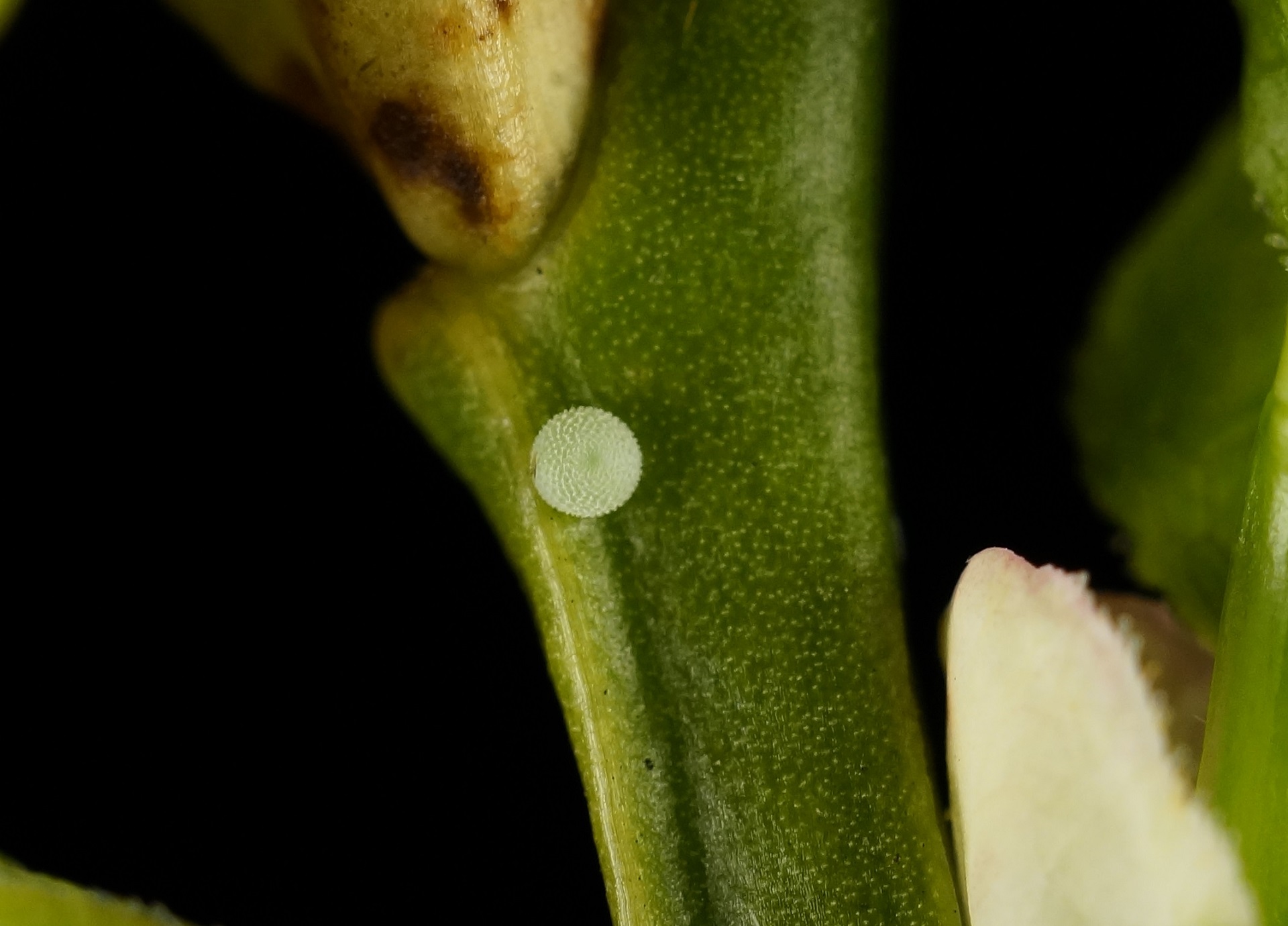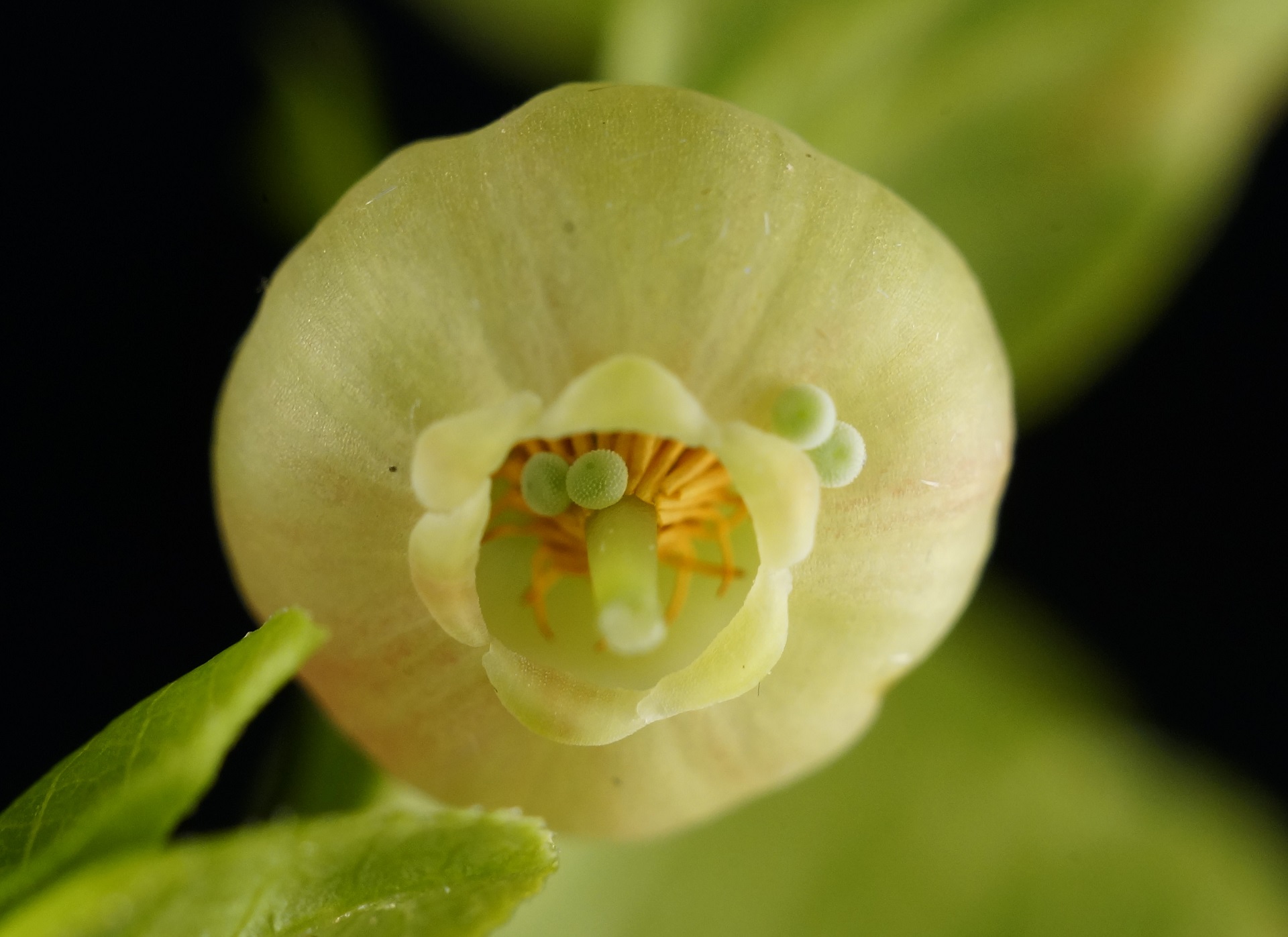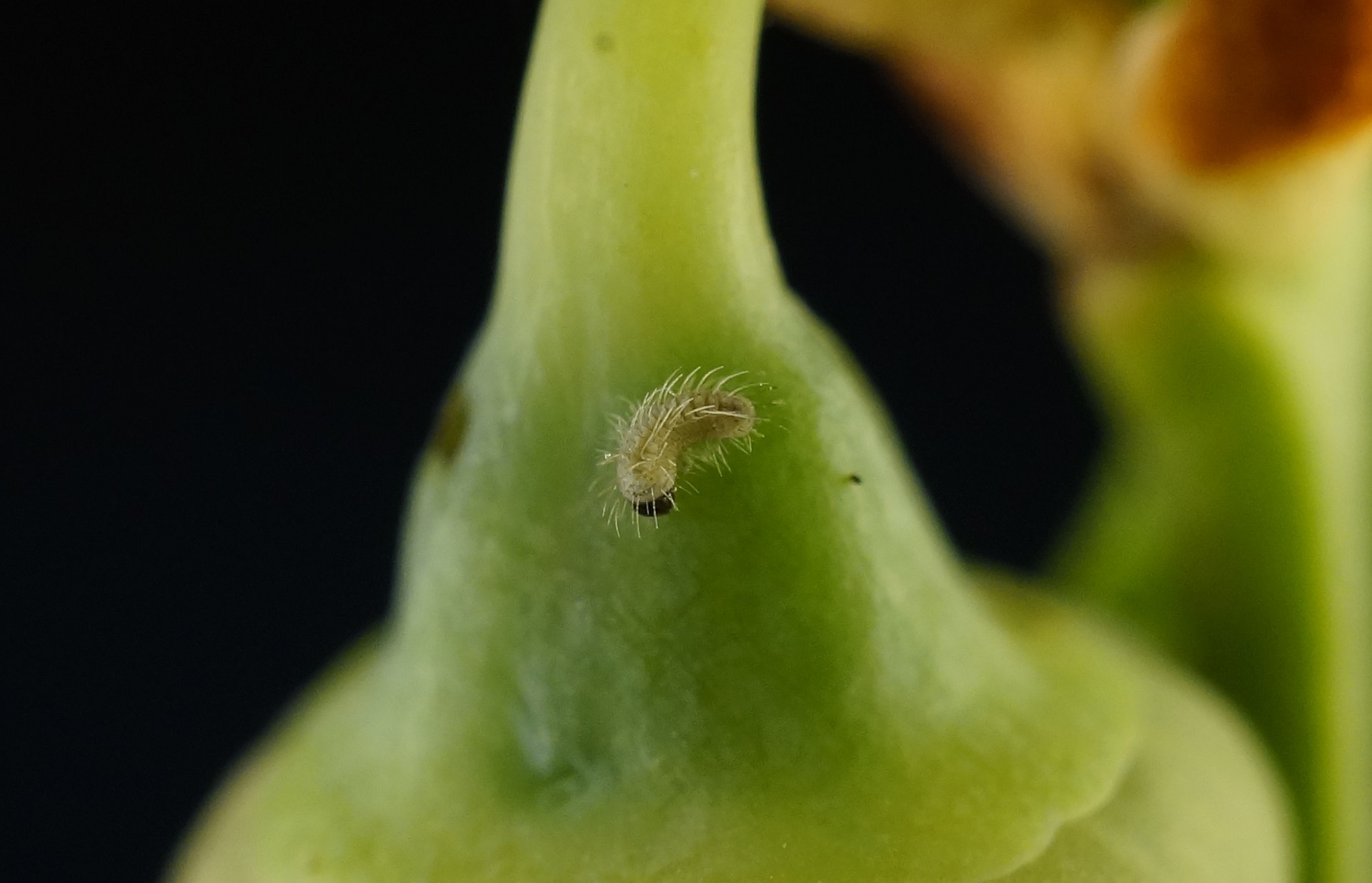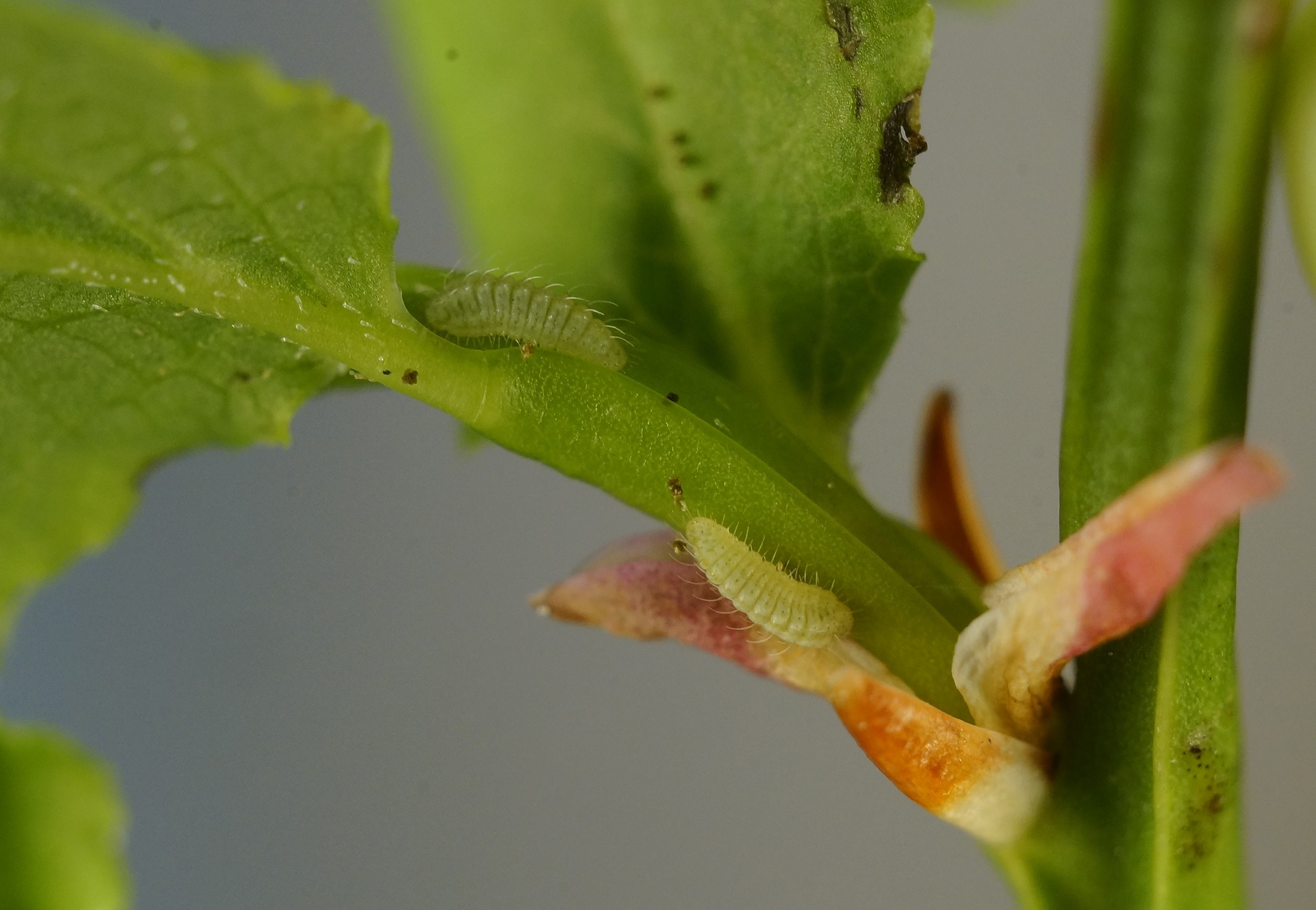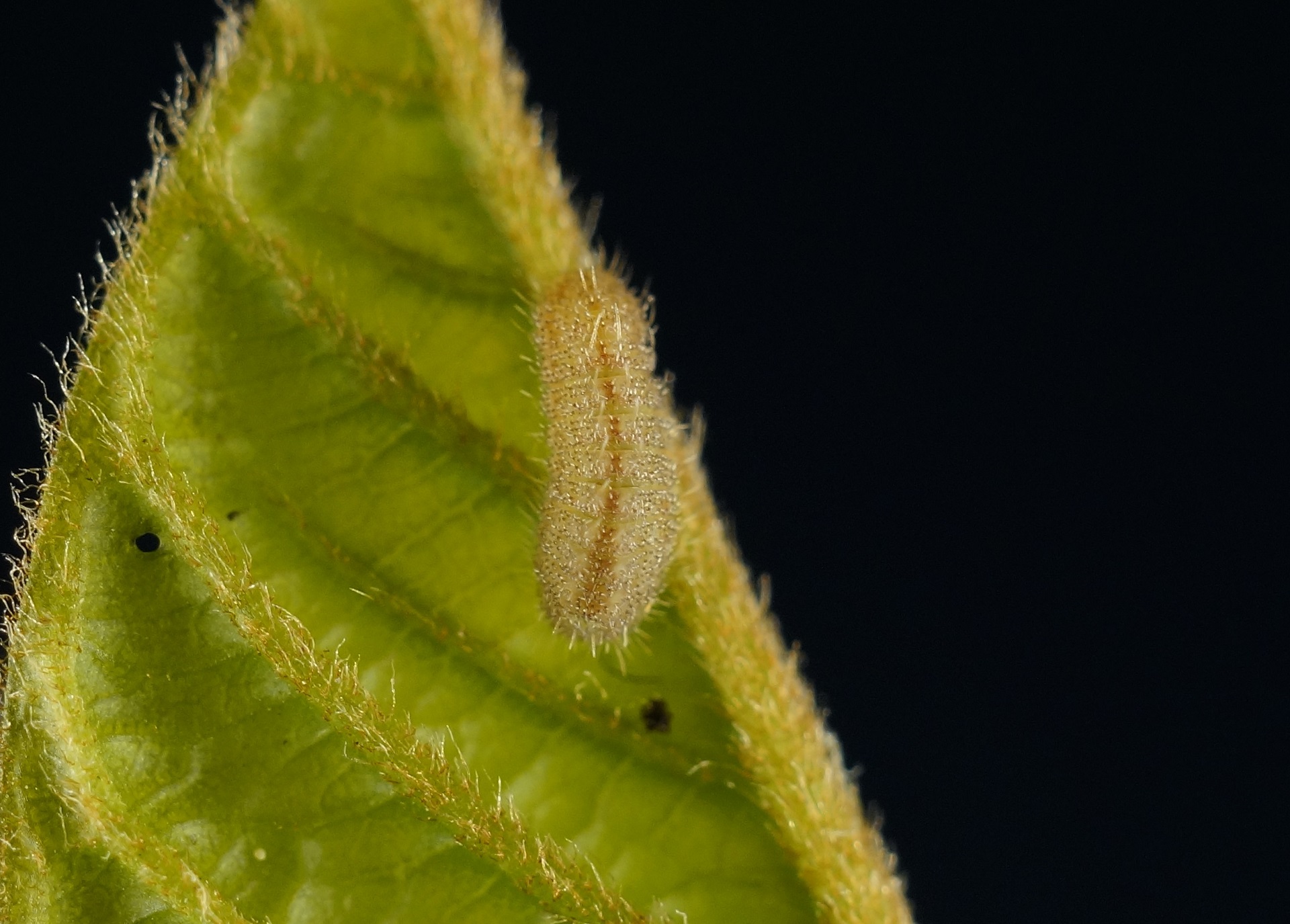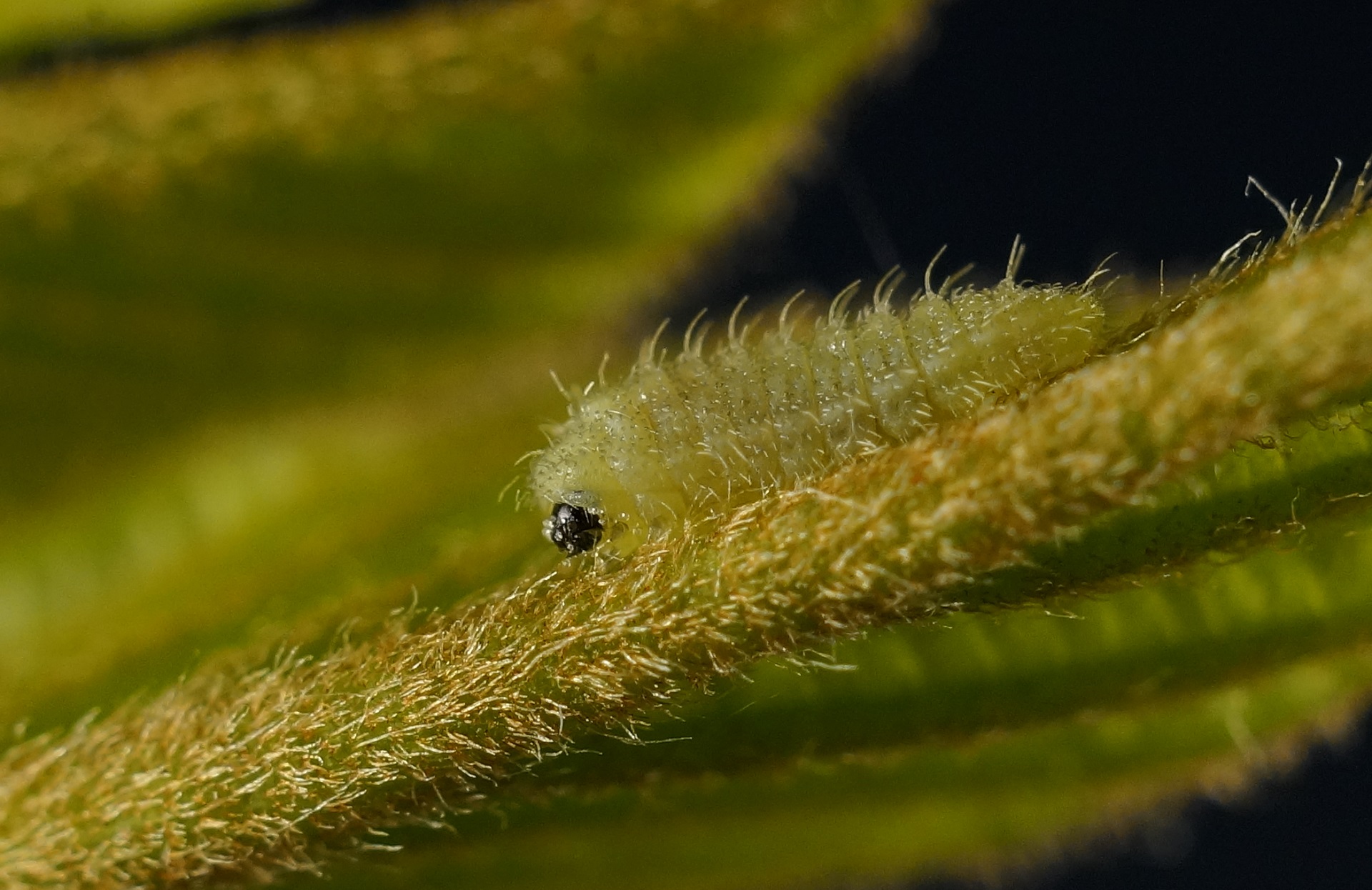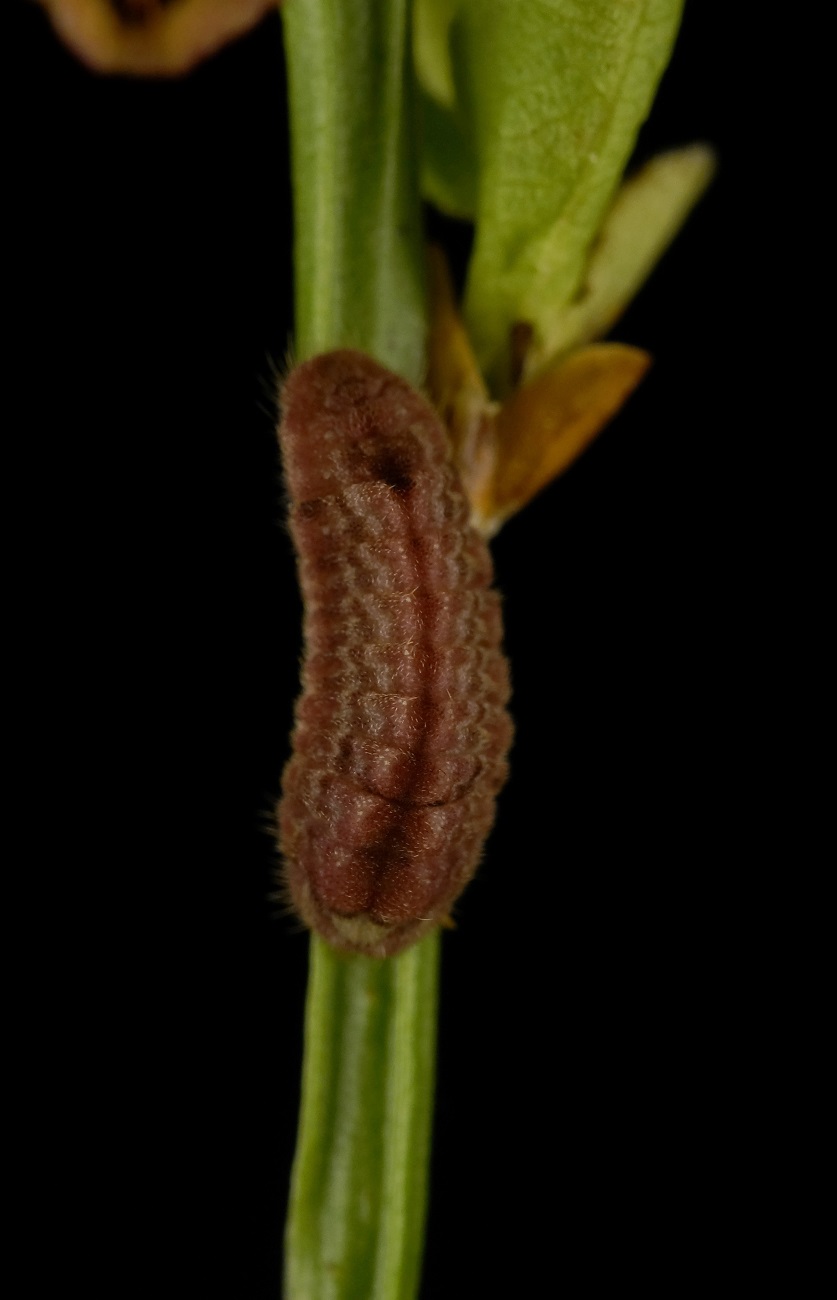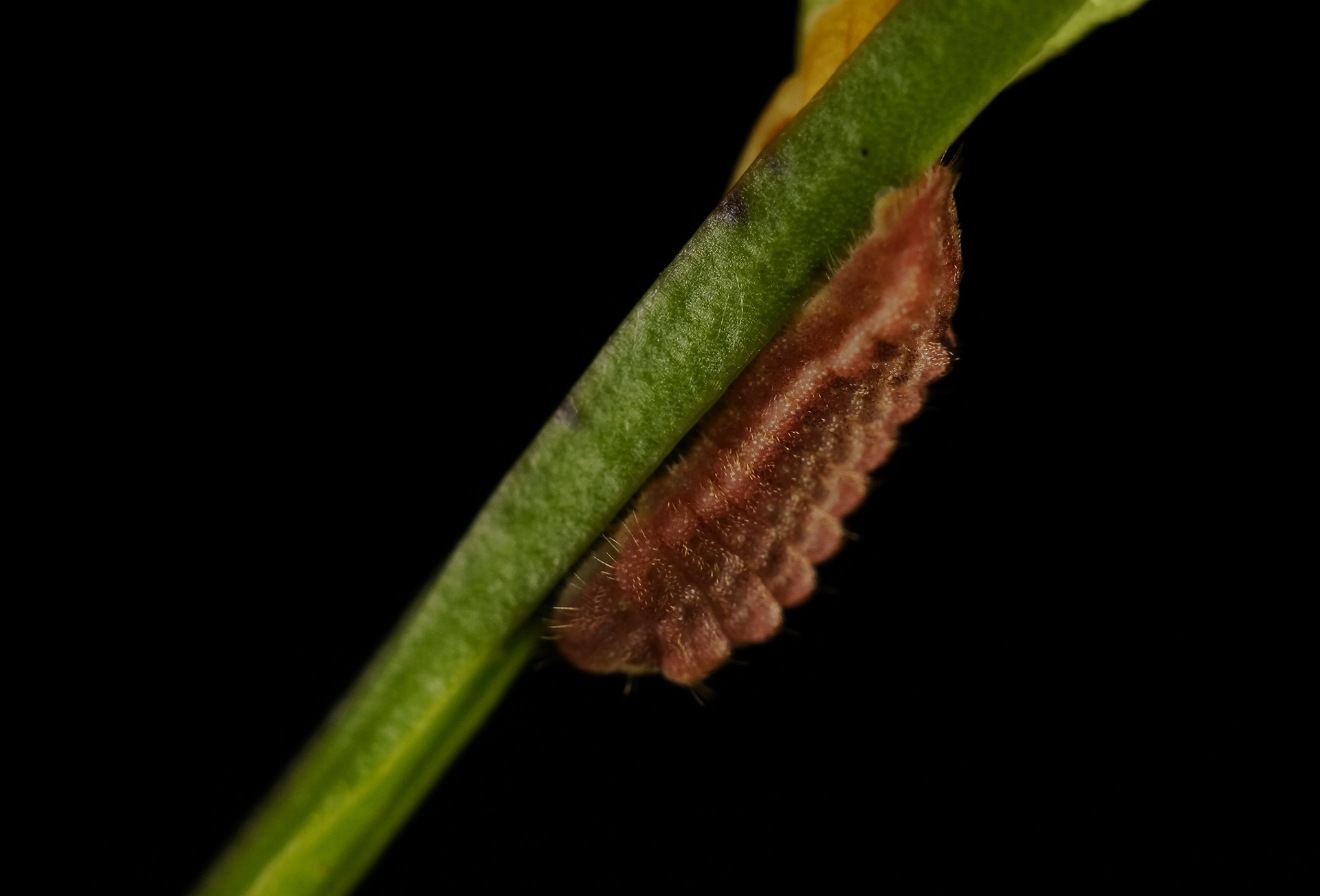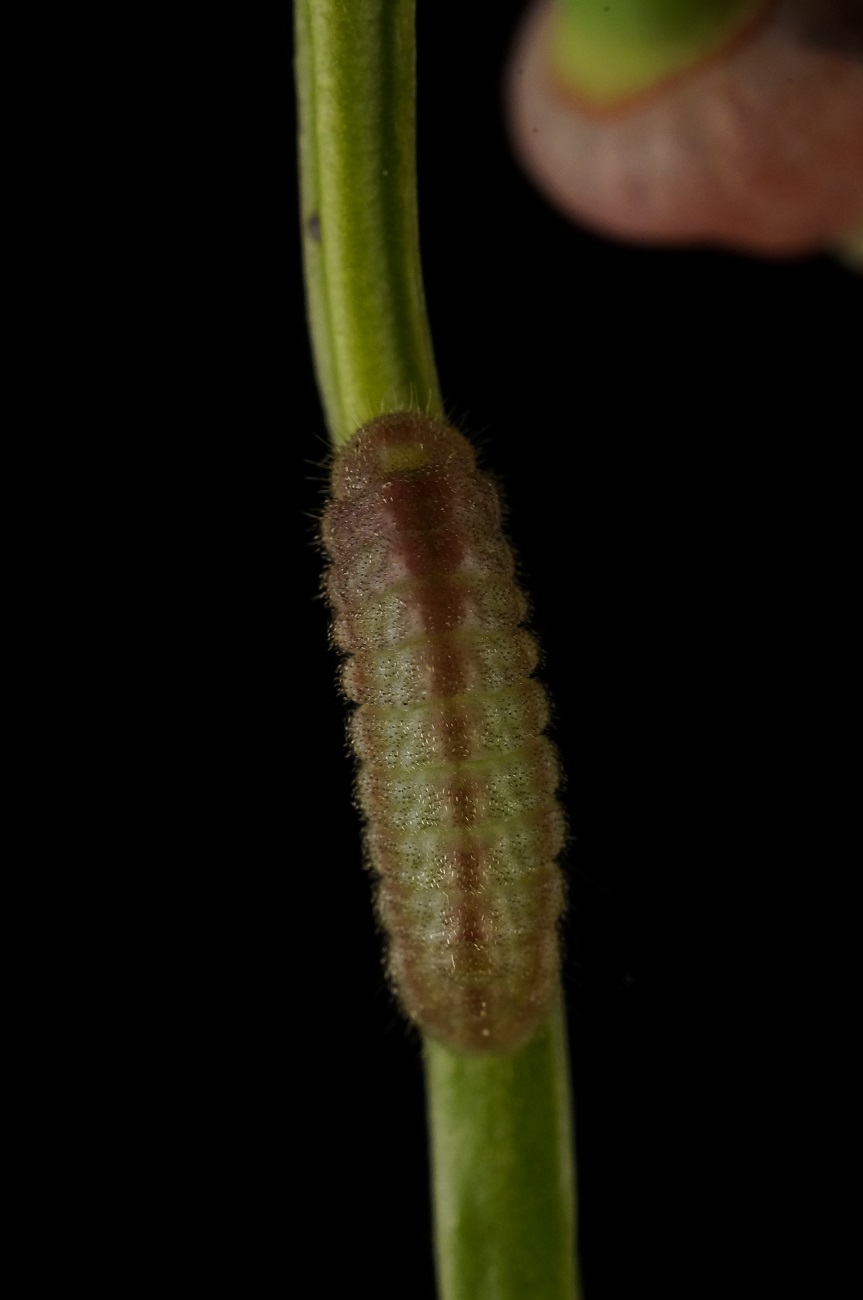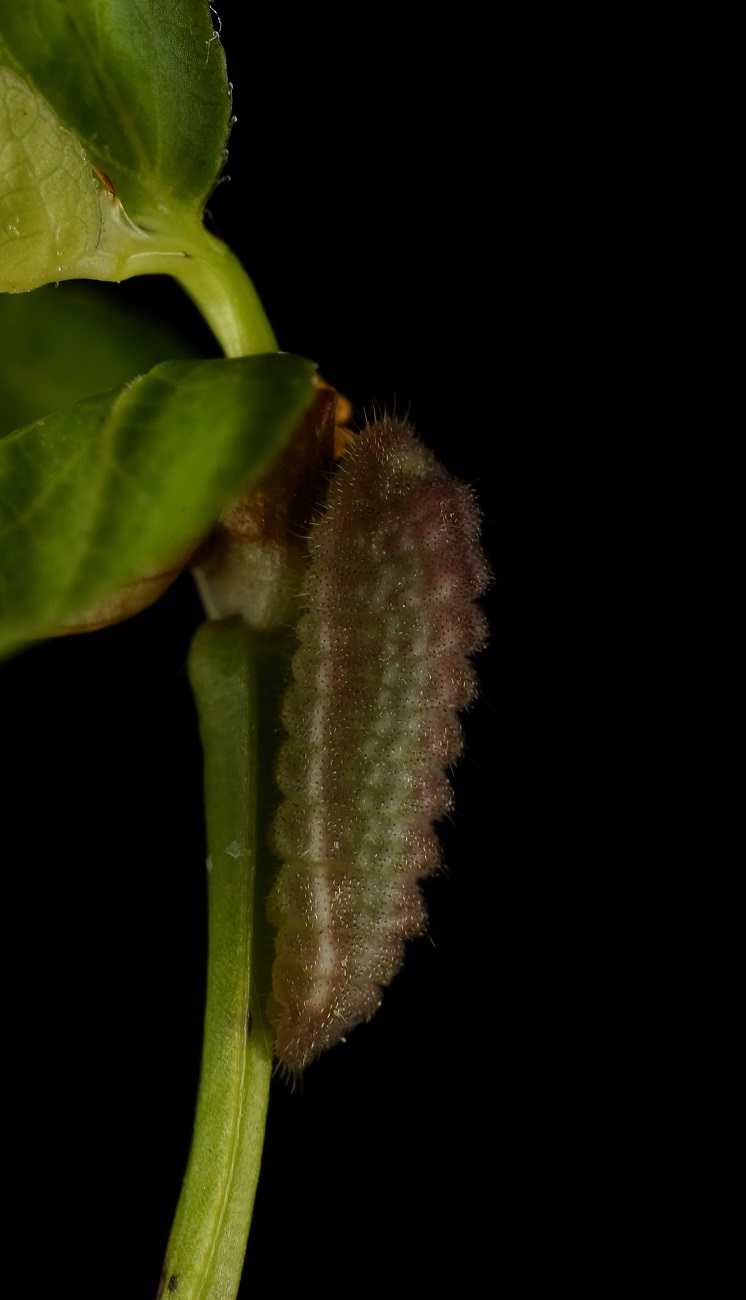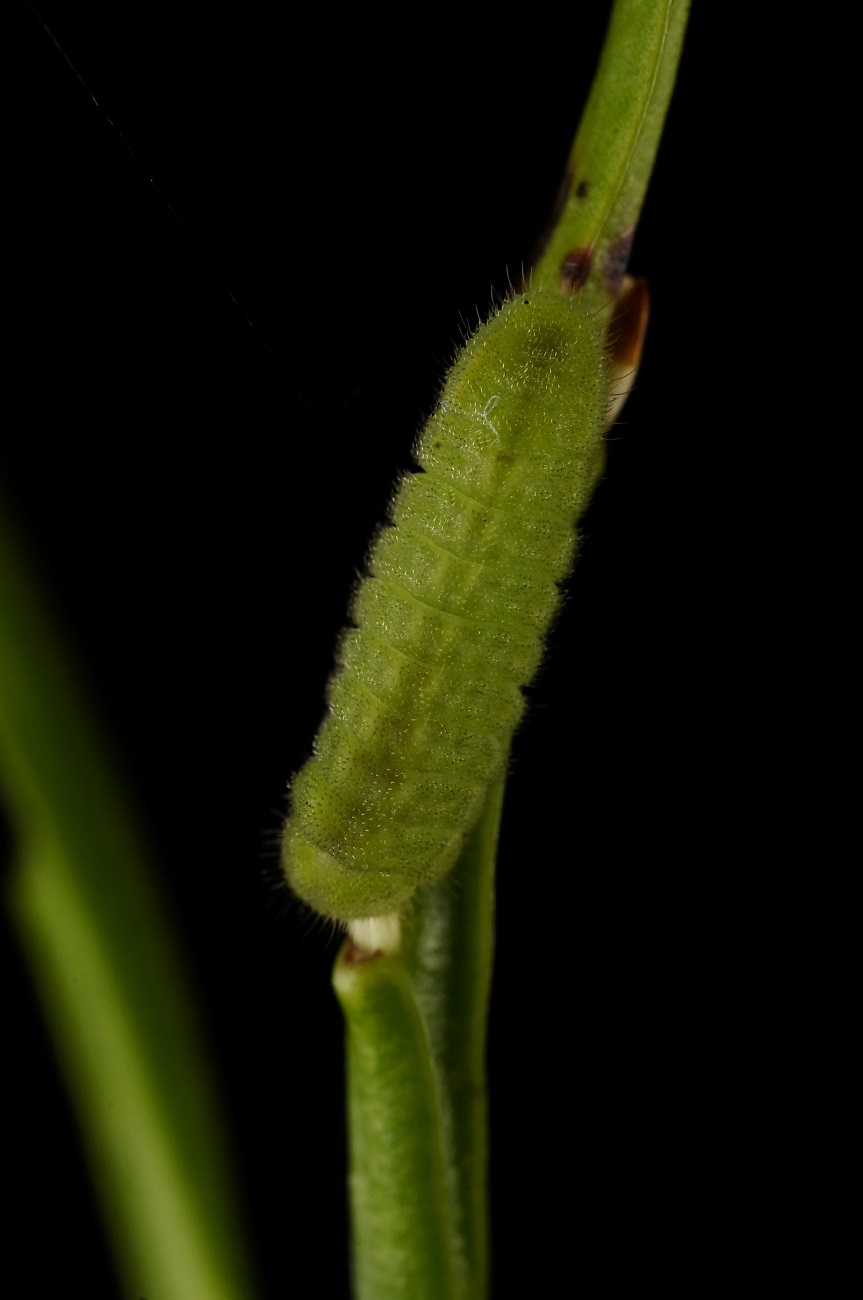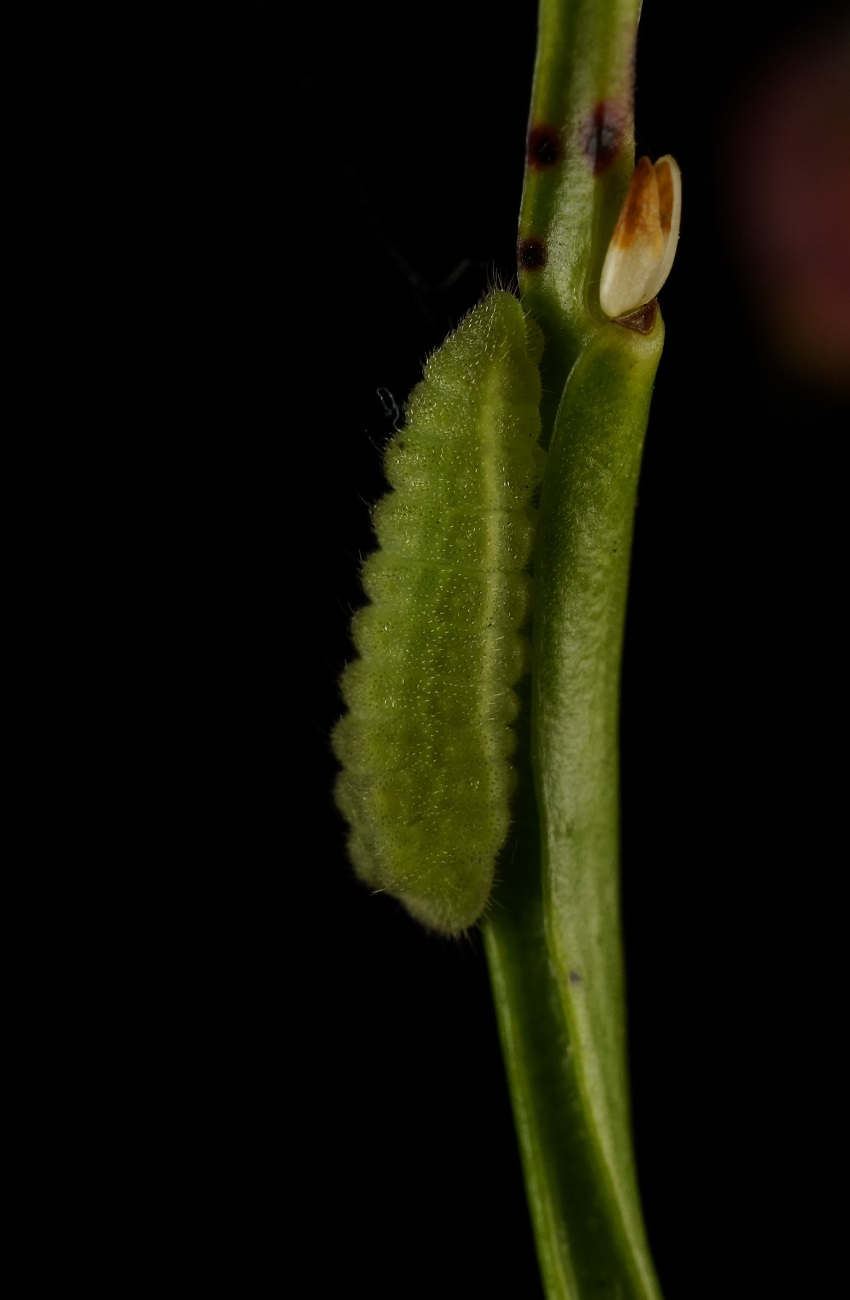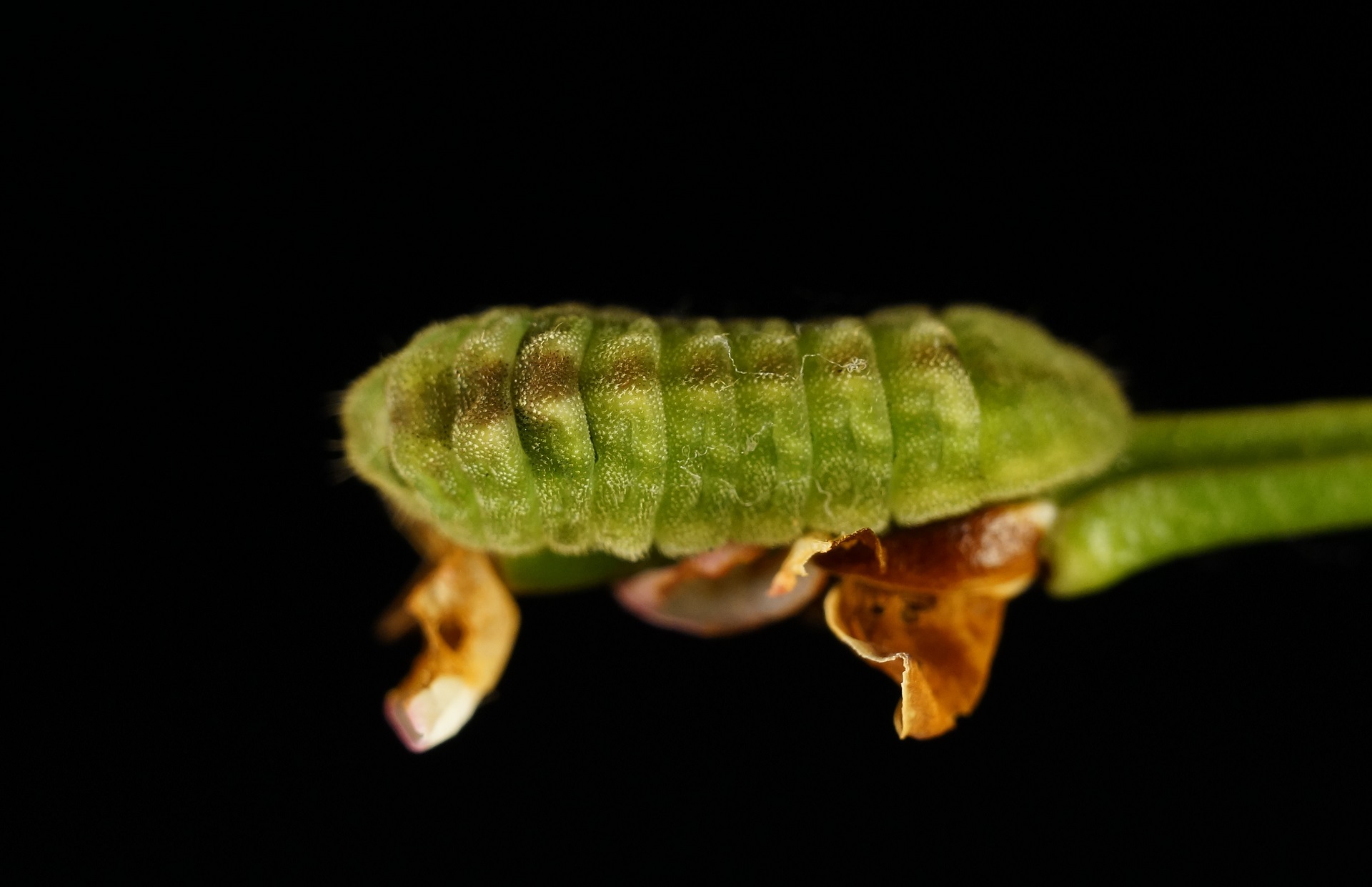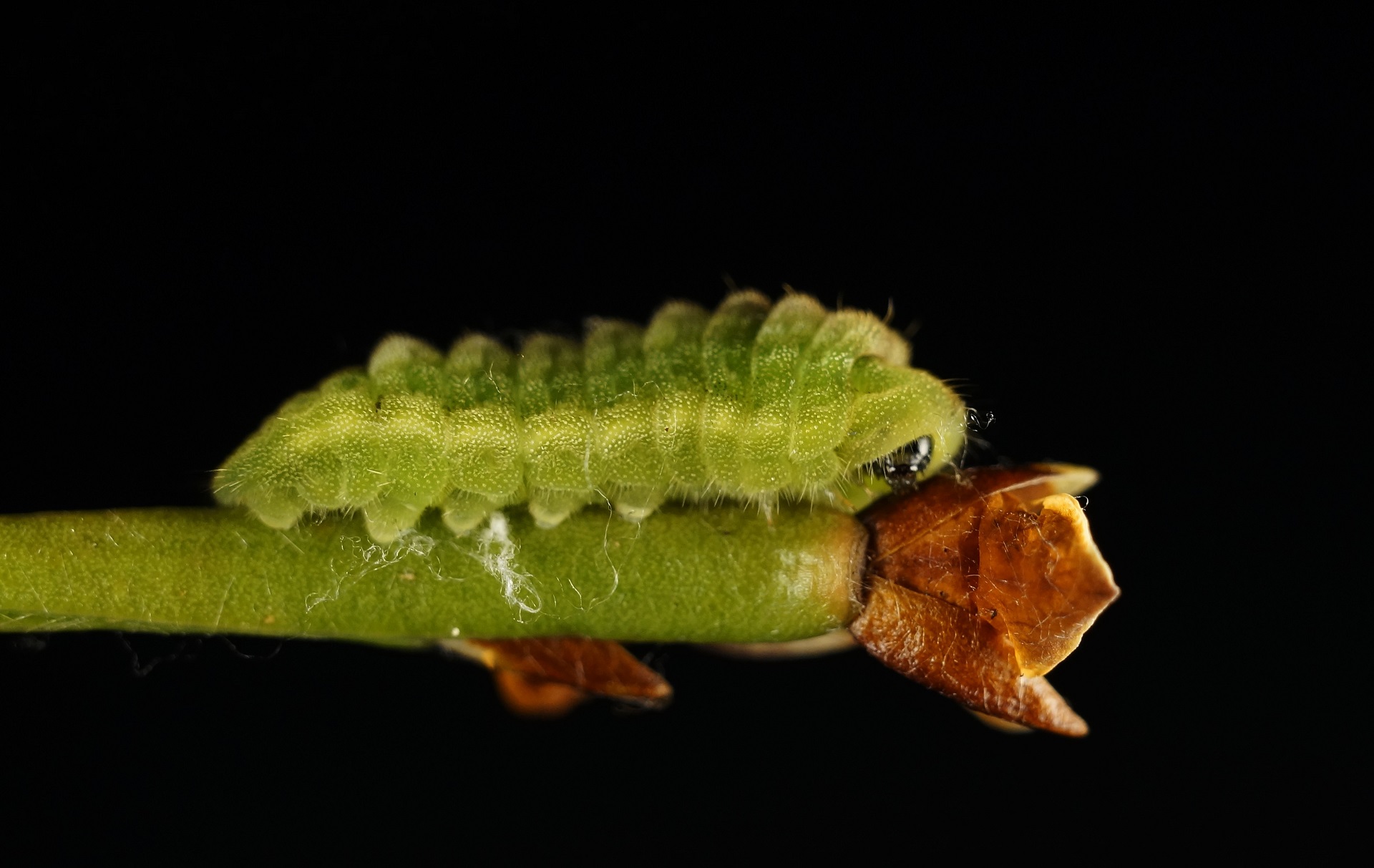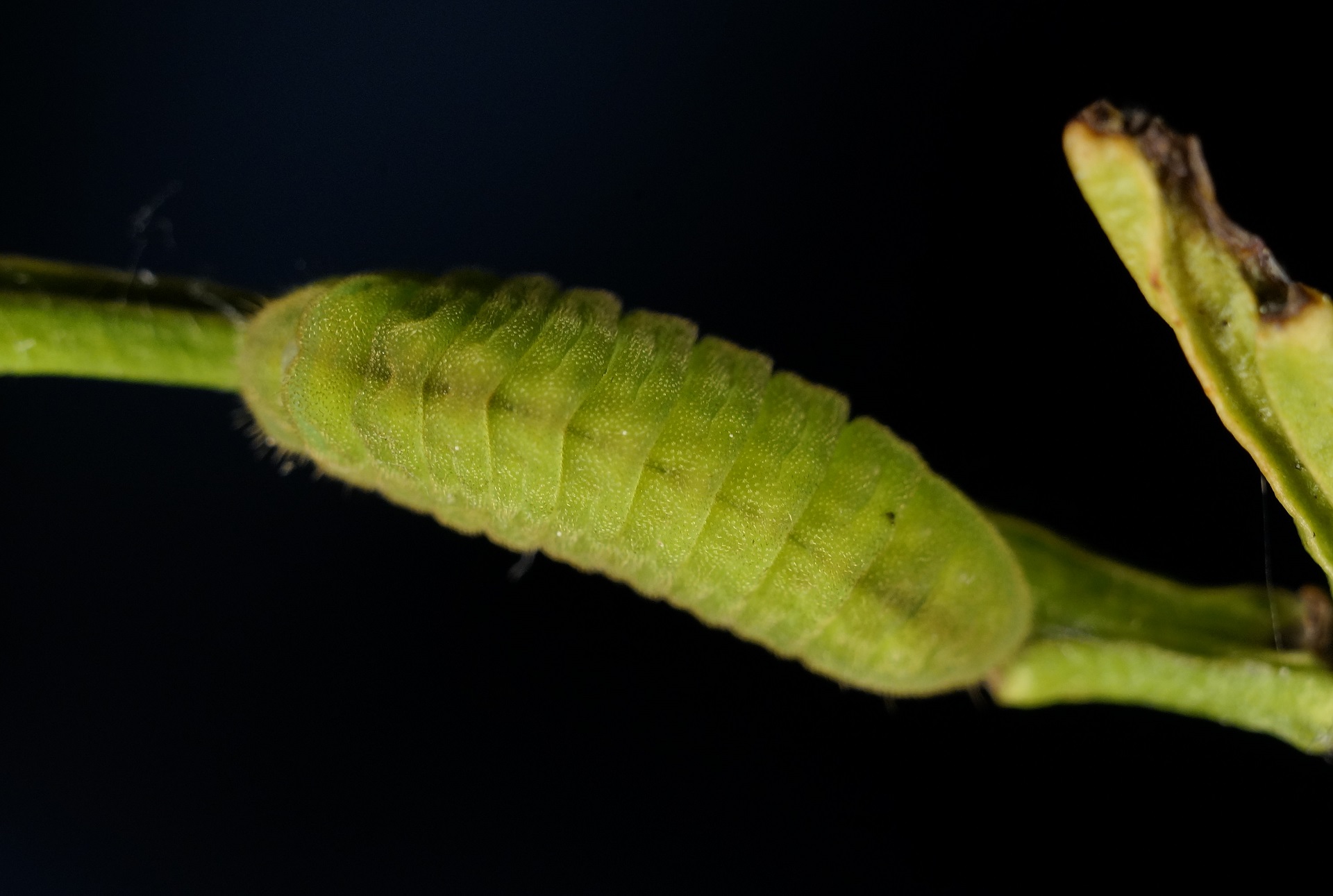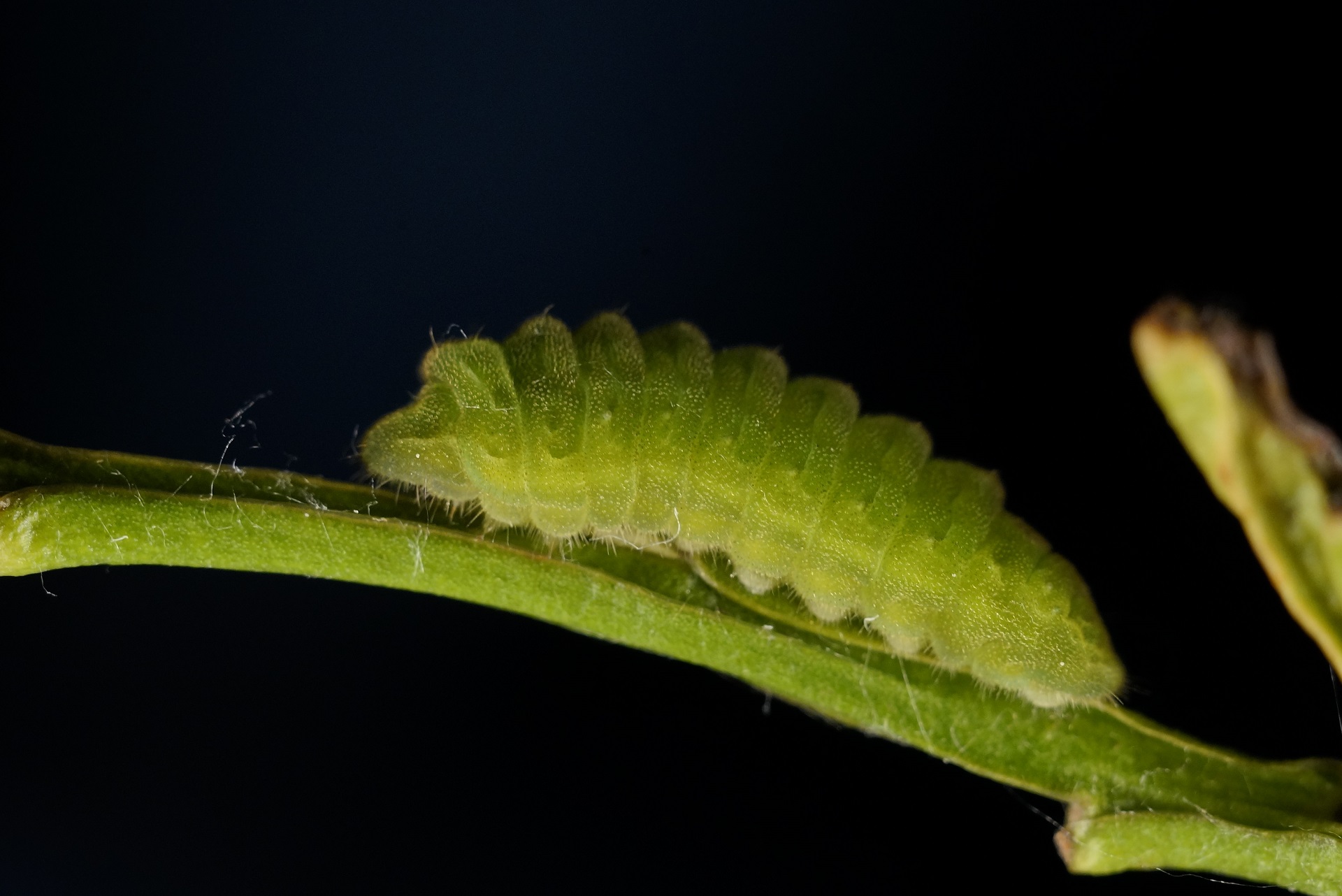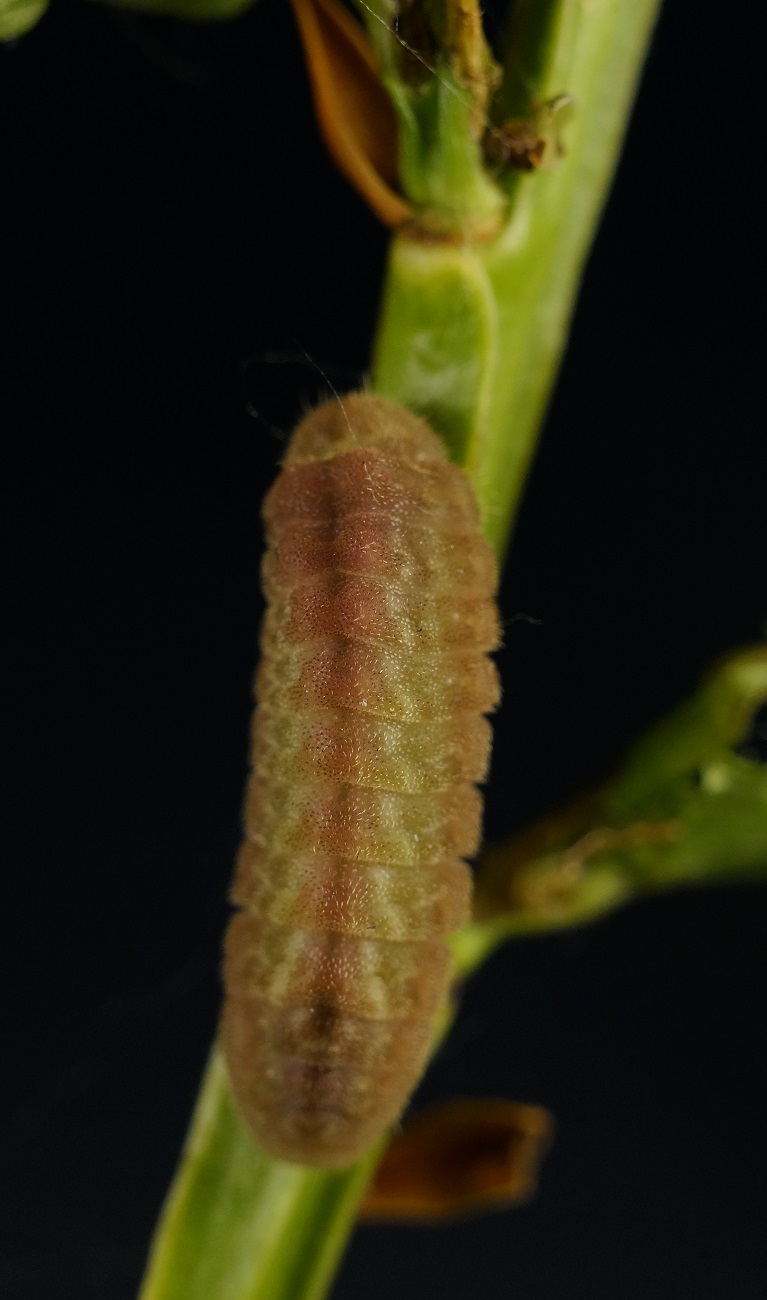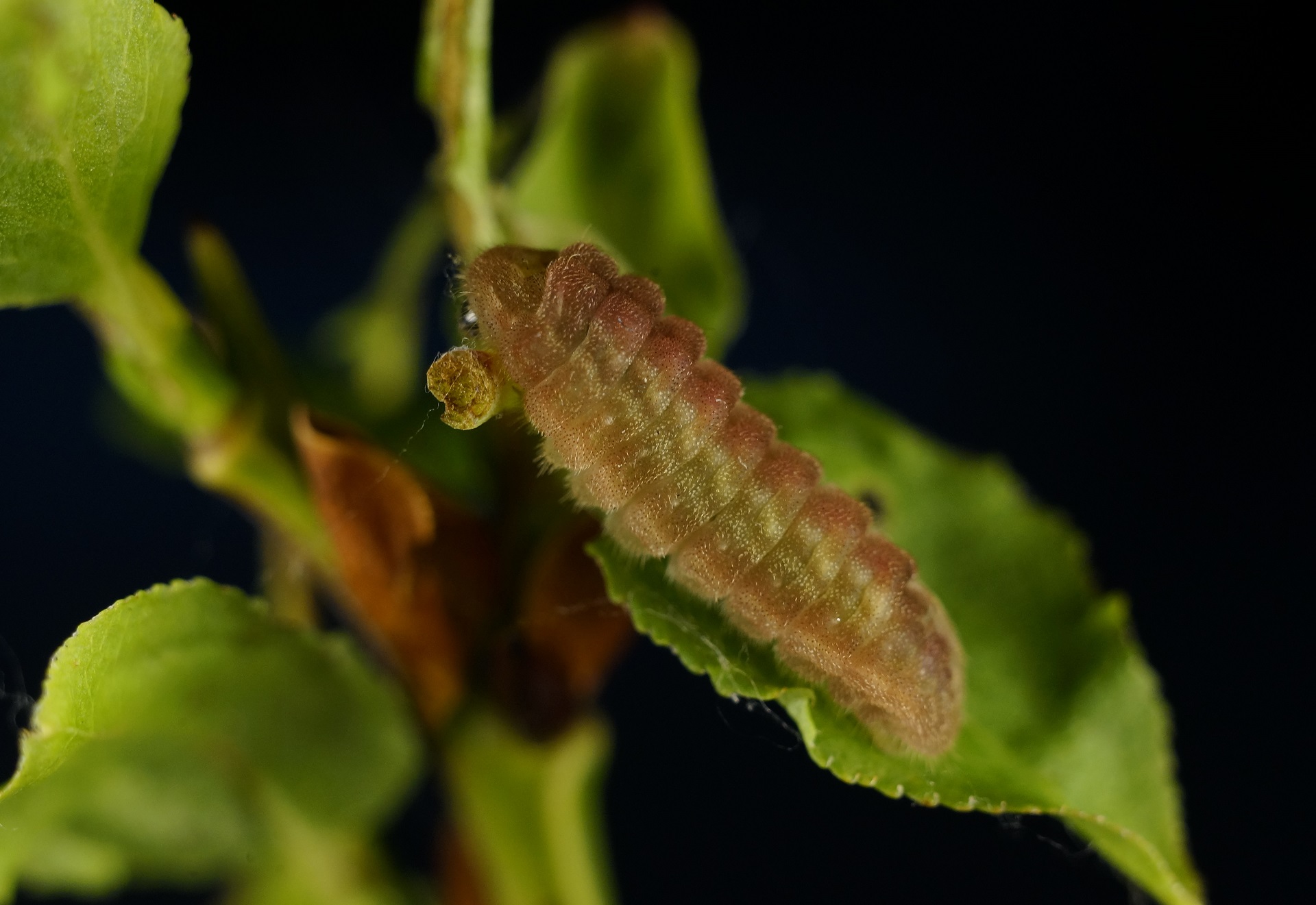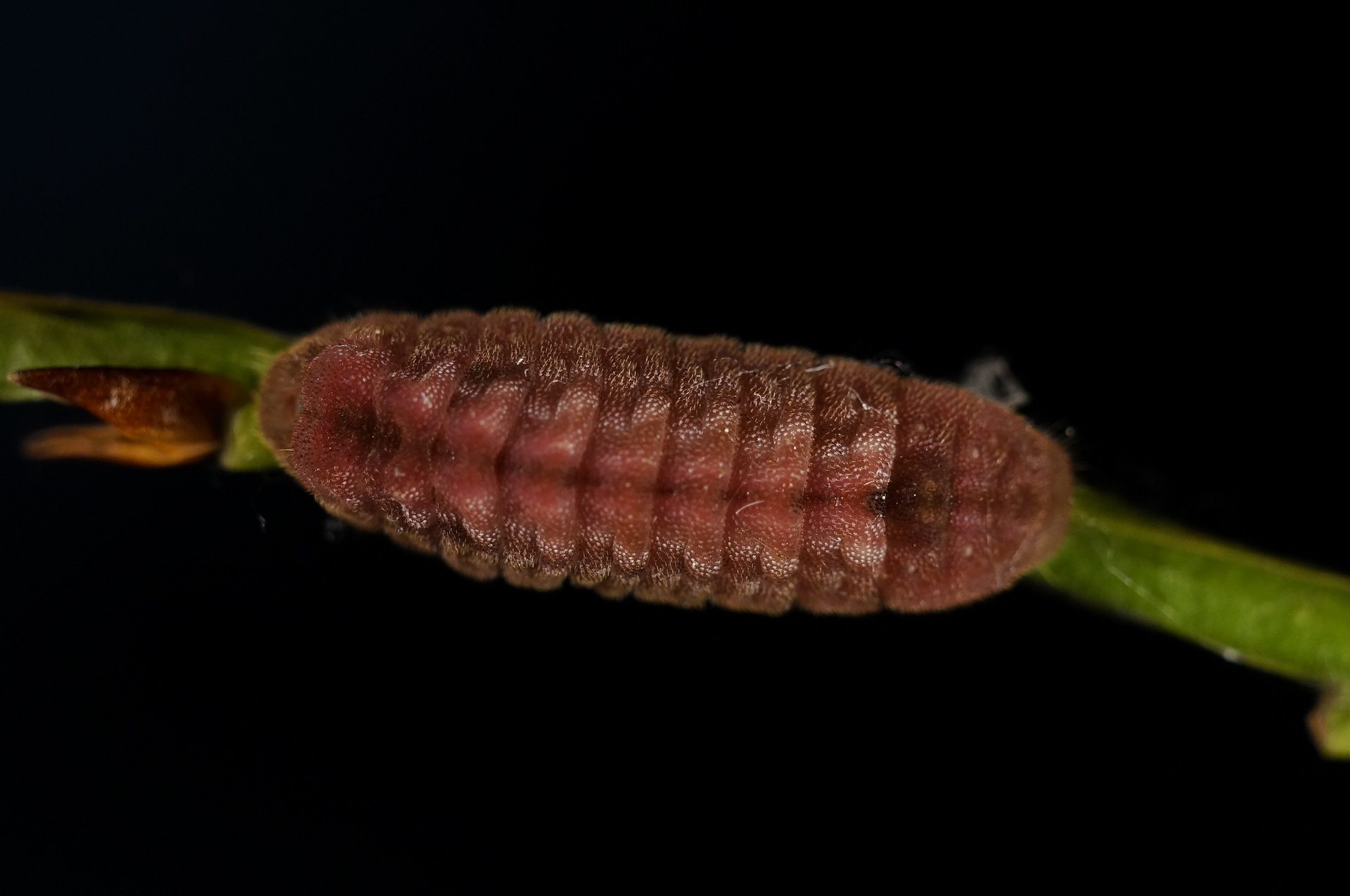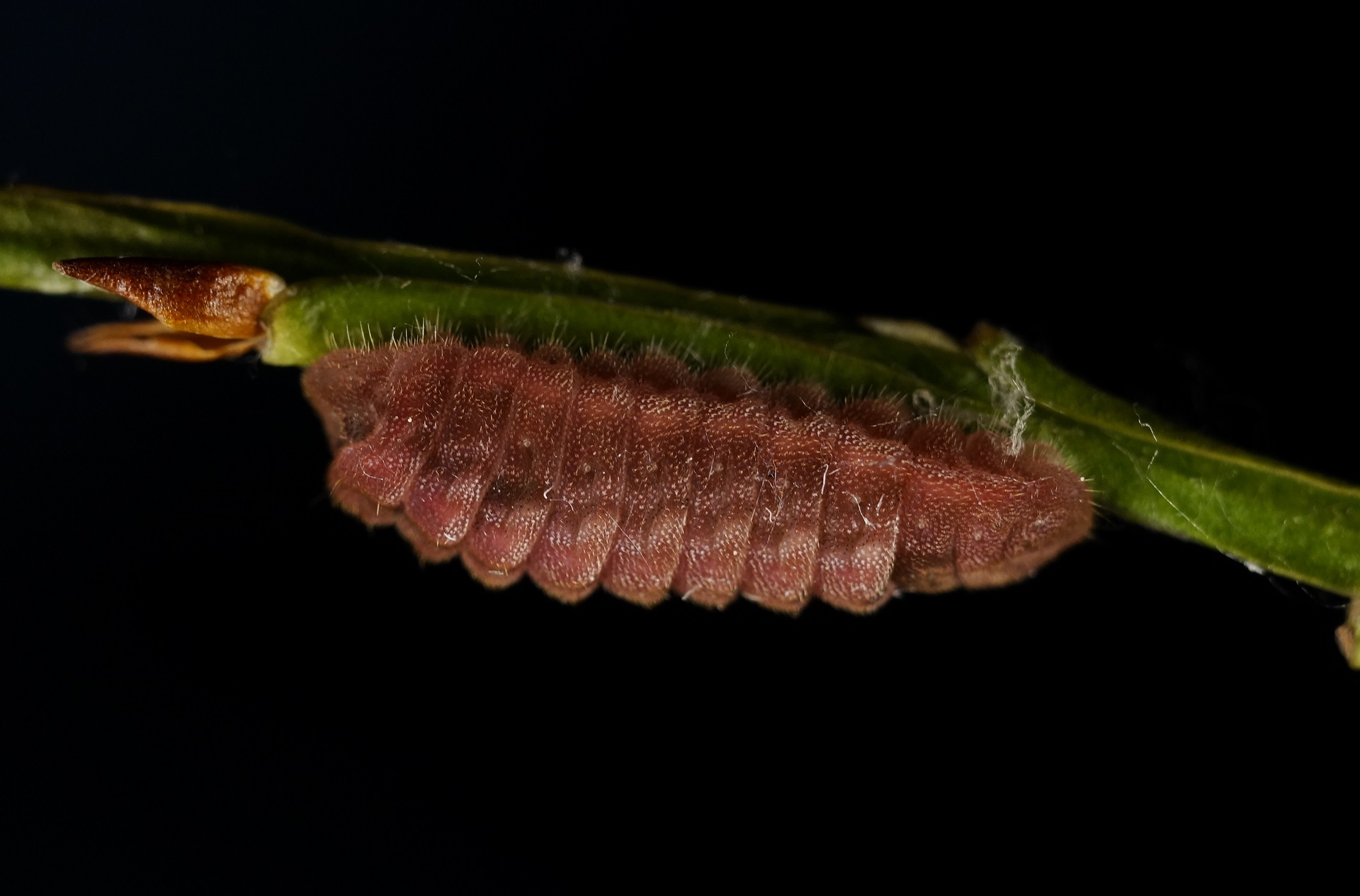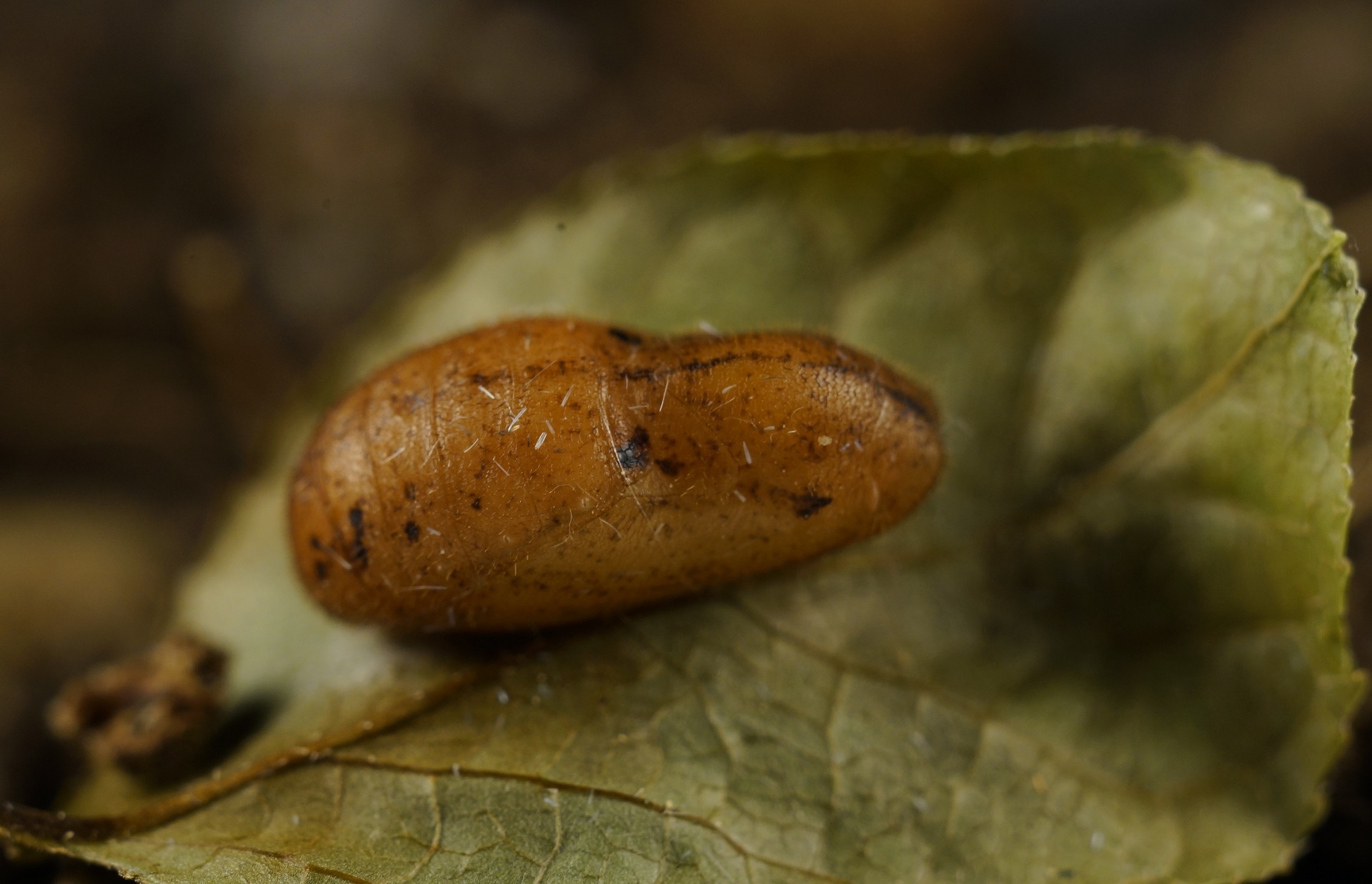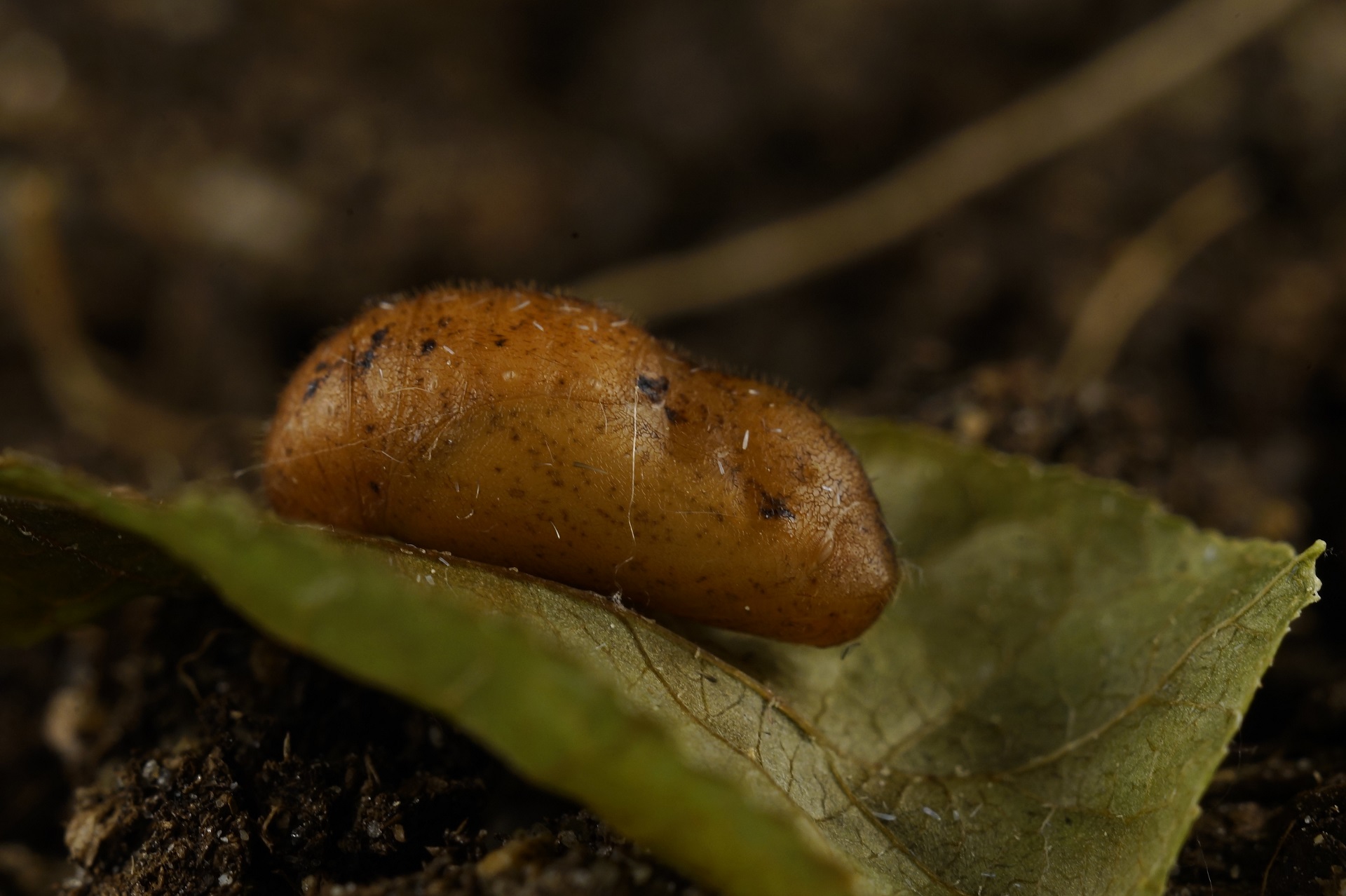Celastrina argiolus
Hostplant: The larva feeds on different kinds of plants and bushes, especially Frangula alnus and Vaccinium myrtillus. I used both in my breeding.
Lifecycle and behavior: In captivity, the female laid her eggs in clusters almost exclusively on the flowers and flower buds of the hostplant. In the wild its probably more normal for the female to lay her eggs singularly. The eggs used 5 days to hatch. The young larva exhibited a rather tedious eating behavior where they would dig in and eat some parts of a proximal stem, causing the distal parts of the plant to die. As such, i had to change hostplant very frequently! As they grew bigger, they started targeting the developing berries, often leaving only a hole and an empty interior of the berry. They also fed on the leaves, but preferred the developing berries. The whole larval stage lasted 14-16 days, and they molted 3 times. The larva showed a big variety in appearance, ranging from all green to all red in color. Pupal stages lasted about 8-9 days. The adult butterfly is on the wing usually from April until August. It flies in 1-2 generations, depending on the weather conditions. In my personal experience, i found the 2nd generation to have become much more common in recent years. The pupa hibernates.

